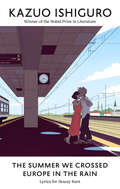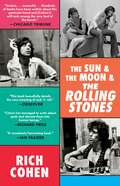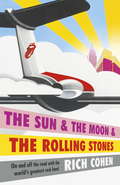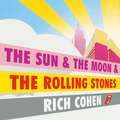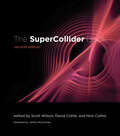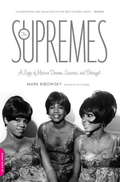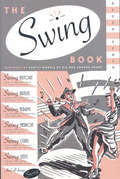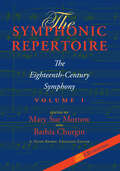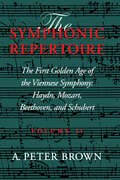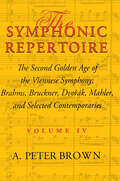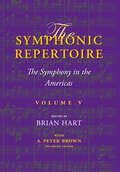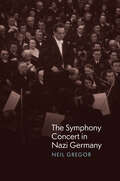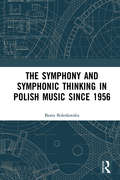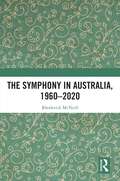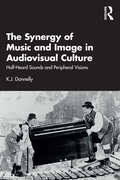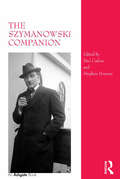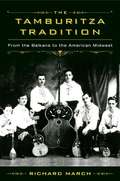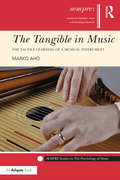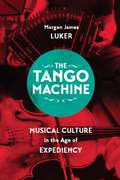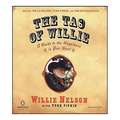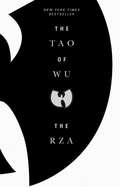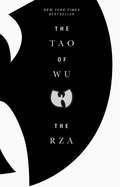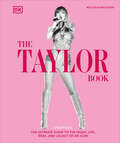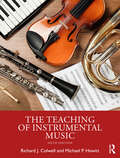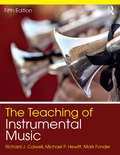- Table View
- List View
The Summer We Crossed Europe in the Rain: Lyrics for Stacey Kent
by Kazuo IshiguroFrom the Nobel Prize–winning author of Klara and the Sun and Never Let Me Go comes a gorgeously illustrated volume of lyrics written for the platinum-selling, Grammy-nominated jazz singer Stacey Kent.Memorably introduced by Ishiguro himself, The Summer We Crossed Europe in the Rain collects the lyrics of sixteen songs he wrote for world-renowned American singer Stacey Kent, which were set to music by her partner, Jim Tomlinson. An exquisite coming together of the literary and musical worlds, the lyrics are infused with a sense of yearning, melancholy, love, and the romance of travel and liminal spaces.Further exploring the notion of collaboration and interpretation, the collection is illustrated by the acclaimed Italian artist Bianca Bagnarelli, whose work perfectly captures the atmosphere and sensibility of the songs.
The Sun & The Moon & The Rolling Stones
by Rich CohenA panoramic narrative history that will give readers a new understanding of the Rolling Stones, viewed through the impassioned and opinionated lens of the Vanity Fair contributor--and co-creator of HBO's Vinyl--who was along for the ride as a young reporter on the road with the band in the 1990s Rich Cohen enters the Stones epic as a young journalist on the road with the band and quickly falls under their sway--privy to the jokes, the camaraderie, the bitchiness, the hard living. Inspired by a lifelong appreciation of the music that borders on obsession, Cohen's chronicle of the band is informed by the rigorous views of a kid who grew up on the music and for whom the Stones will always be the greatest rock 'n' roll band of all time.The story begins at the beginning: the fateful meeting of Mick Jagger and Keith Richards on a train platform in 1961--and goes on to span decades, with a focus on the golden run--from the albums Beggars Banquet (1968) to Exile on Main Street (1972)--when the Stones were prolific and innovative and at the height of their powers. Cohen is equally as good on the low points as the highs, and he puts his finger on the moments that not only defined the Stones as gifted musicians schooled in the blues and arguably the most innovative songwriters of their generation, but as the avatars of so much in our modern culture. In the end, though, after the drugs and the girlfriends and the rows, there is the music. The Sun & The Moon & The Rolling Stones makes you want to listen to every song in your library anew and search out the obscure gems that you've yet to hear. The music, together with Cohen's fresh and galvanizing consideration of the band, will define, once and forever, why the Stones will always matter.
The Sun & the Moon & the Rolling Stones
by Rich CohenRich Cohen enters the Stones epic as a young journalist on the road with the band and quickly falls under their sway - privy to the jokes, the camaraderie, the bitchiness, the hard living. Inspired by a lifelong appreciation of the music that borders on obsession, Cohen's chronicle of the band is informed by the rigorous views of a kid who grew up on the music and for whom the Stones will always be the greatest rock 'n' roll band of all time.This is a non-fiction book that reads like a novel filled with the greatest musicians, agents and artists of the most indelible age in pop culture. It's a book only Rich, with his unique access, experience and love of the band could write.
The Sun & the Moon & the Rolling Stones
by Rich CohenRich Cohen enters the Stones epic as a young journalist on the road with the band and quickly falls under their sway - privy to the jokes, the camaraderie, the bitchiness, the hard living. Inspired by a lifelong appreciation of the music that borders on obsession, Cohen's chronicle of the band is informed by the rigorous views of a kid who grew up on the music and for whom the Stones will always be the greatest rock 'n' roll band of all time.(P)2016 Random House Audio
The SuperCollider Book, second edition
by Scott Wilson Nick Collins David CottleA comprehensive update of the essential reference to SuperCollider, with new material on machine learning, musical notation and score making, SC Tweets, alternative editors, parasite languages, non-standard synthesis, and the cross-platform GUI library.SuperCollider is one of the most important domain-specific audio programming languages, with wide-ranging applications across installations, real-time interaction, electroacoustic pieces, generative music, and audiovisuals. Now in a comprehensively updated new edition, The SuperCollider Book remains the essential reference for beginners and advanced users alike, offering students and professionals a user-friendly guide to the language’s design, syntax, and use. Coverage encompasses the basics as well as explorations of advanced and cutting-edge topics including microsound, sonification, spatialization, non-standard synthesis, and machine learning. Second edition highlights: • New chapters on musical notation and score making, machine learning, SC Tweets, alternative editors, parasite languages, non-standard synthesis, SuperCollider on small computers, and the cross-platform GUI library• New tutorial on installing, setting up, and running the SuperCollider IDE• Technical documentation of implementation and information on writing your own unit generators• Diverse artist statements from international musicians• Accompanying code examples and extension libraries
The Supremes: A Saga of Motown Dreams, Success, and Betrayal
by Mark RibowskyThe acclaimed, first comprehensive biography of the most successful female vocal group of all time
The Swing Book
by Degen PenerThe complete guide to the history, music, style, lingo and steps of swing, from the golden era to today's new popularity. Ten years ago a revival of swing took place, originating in San Francisco, snowballing into today's international resurgence. This book presents the complete history of swing music and dancing, then and now.
The Symphonic Repertoire, Volume I: The Eighteenth-Century Symphony
by Richard Will Robert O. Gjerdingen Timothy Noonan Peter Alexander Simon McVeigh Allan Badley Jeannette Morgenroth Adena Portowitz Paul R. Bryan Judith L. Schwartz Suzanne Forsberg Joanna Cobb Biermann Sarah Mandel-Yehuda René Ramos R. Todd Rober Michael E. Ruhling Bertil H. van Boer Jean K. Wolf Sterling E. Murray Marita McClymondsCentral to the repertoire of Western art music since the 18th century, the symphony has come to be regarded as one of the ultimate compositional challenges. In his five-volume series The Symphonic Repertoire, the late A. Peter Brown explores the symphony from its 18th-century beginnings to the end of the 20th century. In Volume 1, The Eighteenth-Century Symphony, 22 of Brown's former students and colleagues collaborate to complete the work that he began on this critical period of development in symphonic history. The work follows Brown's outline, is organized by country, and focuses on major composers. It includes a four-chapter overview and concludes with a reframing of the symphonic narrative. Contributors address issues of historiography, the status of research, and questions of attribution and stylistic traits, and provide background material on the musical context of composition and early performances. The volume features a CD of recordings from the Bloomington Early Music Festival Orchestra, highlighting the largely unavailable repertoire discussed in the book.
The Symphonic Repertoire, Volume II: The First Golden Age of the Viennese Symphony: Haydn, Mozart, Beethoven, and Schubert
by A. Peter BrownCentral to the repertoire of Western art music since the 18th century, the symphony has come to be regarded as one of the ultimate compositional challenges. Surprisingly, heretofore there has been no truly extensive, broad-based treatment of the genre, and the best of the existing studies are now several decades old. In this five-volume series, A. Peter Brown explores the symphony from its 18th-century beginnings to the end of the 20th century. Synthesizing the enormous scholarly literature, Brown presents up-to-date overviews of the status of research, discusses any important former or remaining problems of attribution, illuminates the style of specific works and their contexts, and samples early writings on their reception. The Symphonic Repertoire provides an unmatched compendium of knowledge for the student, teacher, performer, and sophisticated amateur. The series is being launched with two volumes on the Viennese symphony.Volume II The First Golden Age of the Viennese SymphonyHaydn, Mozart, Beethoven, and SchubertVolume II considers some of the best-known and most universally admired symphonies by Haydn, Mozart, Beethoven, and Schubert, who created what A. Peter Brown designates as the first golden age of the Viennese symphony during the late 18th and first three decades of the 19th century. The last two dozen symphonies by Haydn, half dozen by Mozart, and three by Schubert, together with Beethoven's nine symphonies became established in the repertoire and provided a standard against which every other symphony would be measured. Most significantly, they imparted a prestige to the genre that was only occasionally rivaled by other cyclic compositions. More than 170 symphonies from this repertoire are described and analyzed in The First Golden Age of the Viennese Symphony, the first volume of the series to appear.
The Symphonic Repertoire, Volume IV: The Second Golden Age of the Viennese Symphony: Brahms, Bruckner, Dvorák, Mahler, and Selected Contemporaries
by A. Peter BrownCentral to the repertoire of Western art music since the 18th century, the symphony has come to be regarded as one of the ultimate compositional challenges. Surprisingly, heretofore there has been no truly extensive, broad-based treatment of the genre, and the best of the existing studies are now several decades old. In this five-volume series, A. Peter Brown explores the symphony from its 18th-century beginnings to the end of the 20th century. Synthesizing the enormous scholarly literature, Brown presents up-to-date overviews of the status of research, discusses any important former or remaining problems of attribution, illuminates the style of specific works and their contexts, and samples early writings on their reception. The Symphonic Repertoire provides an unmatched compendium of knowledge for the student, teacher, performer, and sophisticated amateur. The series is being launched with two volumes on the Viennese symphony.Volume IV The Second Golden Age of the Viennese SymphonyBrahms, Bruckner, Dvorák, Mahler, and Selected ContemporariesAlthough during the mid-19th century the geographic center of the symphony in the Germanic territories moved west and north from Vienna to Leipzig, during the last third of the century it returned to the old Austrian lands with the works of Brahms, Bruckner, Dvorák, and Mahler. After nearly a half century in hibernation, the sleeping Viennese giant awoke to what some viewed as a reincarnation of Beethoven with the first hearing of Brahms's Symphony No. 1, which was premiered at Vienna in December 1876. Even though Bruckner had composed some gigantic symphonies prior to Brahms's first contribution, their full impact was not felt until the composer's complete texts became available after World War II. Although Dvorák was often viewed as a nationalist composer, in his symphonic writing his primary influences were Beethoven, Schubert, and Brahms. For both Bruckner and Mahler, the symphony constituted the heart of their output; for Brahms and Dvorák, it occupied a less central place. Yet for all of them, the key figure of the past remained Beethoven. The symphonies of these four composers, together with the works of Goldmark, Zemlinsky, Schoenberg, Berg, Smetana, Fibich, Janácek, and others are treated in Volume IV, The Second Golden Age of the Viennese Symphony, covering the period from roughly 1860 to 1930.
The Symphonic Repertoire, Volume V: The Symphony in the Americas
by J. Peter Burkholder Carol A. Hess Katherine Baber Drew Massey E. Douglas Bomberger Douglas Shadle Susan Key Matthew MugmonCentral to the repertoire of Western art music since the 1700s, the symphony has come to be regarded as one of the ultimate compositional challenges.In his series The Symphonic Repertoire, the late A. Peter Brown explored the symphony in Europe from its origins into the 20th century. In Volume V, Brown's former students and colleagues continue his vision by turning to the symphony in the Western Hemisphere. It examines the work of numerous symphonists active from the early 1800s to the present day and the unique challenges they faced in contributing to the European symphonic tradition. The research adds to an unmatched compendium of knowledge for the student, teacher, performer, and sophisticated amateur. This much-anticipated fifth volume of The Symphonic Repertoire: The Symphony in the Americas offers a user-friendly, comprehensive history of the symphony genre in the United States and Latin America.
The Symphony Concert in Nazi Germany
by Neil GregorA new history of how the musical worlds of German towns and cities were transformed during the Nazi era. In the years after the Nazis came to power in January 1933 and throughout the Second World War, all aspects of life in Germany changed. Despite the social and political upheaval, gentile citizens continued to attend concerts. In this book, historian Neil Gregor surveys how the classical concert scene was impacted in Nazi Germany. Taking the perspective of the audience, rather than institutions or performers, Gregor delves into the cultural lives of ordinary Germans under conditions of dictatorship. Did the ways in which Germans heard music in the period change? Did a Nazi way of listening emerge? For audiences, Gregor shows, changes to the concert experience were small and often took place around the edges. This, combined with the preserved idea of the concert hall as a space of imagined civility and cultivation, led many concertgoers and music lovers to claim after the war that their field and their practice had been innocent—a place to retreat from the vicious violence and racism of the Nazi regime. Drawing on untapped archival sources, The Symphony Concert in Nazi Germany reveals that the true history was one of disruption but also of near seamless adaptation. Through countless small acts, the symphony concert was reframed within the languages of strident nationalism, racism, and militarism to ensure its place inside the cultural cosmos of National Socialist Germany.
The Symphony and Symphonic Thinking in Polish Music Since 1956
by Beata Bolesławska1956 was a year of transition in Poland, and an important year for Polish music. This year saw the beginning of a political thaw – sometimes called the Polish October – in communist Poland. It was also the year of the establishment of the 'Warsaw Autumn' International Festival of Contemporary Music. This was a time of great artistic ferment in Polish music, which also deeply influenced symphonic thinking. The year 1956 is thus an appropriate starting point for Beata Bolesławska’s study of the contemporary Polish symphonic tradition. Bolesławska investigates the influential Polish avant-garde, illuminating the ways in which new musical means and ideas influenced symphonic music and the genre of the symphony in the music of such important composers as Witold Lutosławski (1913–1994), Henryk Mikołaj Górecki (1933–2010) and Krzysztof Penderecki (b. 1933). Referring to the main elements of the European tradition, as well as examining briefly the symphonic activity in Poland before 1956, the book concentrates on the symphonic writing in the context of avant-garde trends, represented by the so-called 'Polish school of composers', as well as on its later redefinitions proposed by Polish composers up to the present day.
The Symphony in Australia, 1960-2020
by Rhoderick McNeillThe Symphony remained a major orchestral form in Australia between 1960 and 2020, with a body of diverse and interesting symphonies produced during the 1960s and 70s that defied the widespread modernist trends of serialism, electronic music and indeterminism that seemed harbingers of the symphony’s demise. From the late 1970s onwards, many Australian composers chose to work in styles that admitted modal and tonal melodic and harmonic elements with regular pulse. Major cycles of symphonies by Carl Vine, Brenton Broadstock and Ross Edwards began to appear in the late 1980s. Other prolific symphonists like Paul Paviour (10 symphonies), David Morgan (15 symphonies), Philip Bracanin (9), Peter Tahourdin (5), John Polglase (5) and many others demonstrated a revived interest in the form. This trend continued into the first two decades of the present century with symphonies by Matthew Hindson, Katy Abbott, Stuart Greenbaum, Andrew Schultz, Mark Isaacs and Gordon Kerry. This renewed interest in the symphony reflects similar trends in Britain and the United States. Rhoderick McNeil provides a comprehensive introduction to this large body of music with the aim of making the music and its composers known to concert-goers, music educators and students, conductors and music entrepreneurs.
The Synergy of Music and Image in Audiovisual Culture: Half-Heard Sounds and Peripheral Visions
by K.J. DonnellyThe Synergy of Music and Image in Audiovisual Culture: Half-Heard Sounds and Peripheral Visions asks what it means to understand music as part of an audiovisual whole, rather than separate components of music and film. Bringing together revised and updated essays on music in a variety of media – including film, television, and video games – this book explores the importance of partially perceived and registered auditory and visual elements and cultural context in creating unique audiovisual experiences. Critiquing traditional models of the film score, The Synergy of Music and Image in Audiovisual Culture enables readers across music, film, and cultural studies to approach and think about audiovisual culture in new ways.
The Szymanowski Companion
by Stephen DownesThe Polish composer Karol Szymanowski is one of the most fascinating musical figures of the early twentieth century. His works included four symphonies, two violin concertos, the operas Hagith and King Roger, the ballet-pantomime Harnasie, the oratorio Stabat Mater, as well as numerous piano, violin, vocal and choral compositions. The profile and popularity of Szymanowski's music outside Poland has never been higher and continues to grow. The Szymanowski Companion constitutes the most significant and comprehensive reference source to the composer in English. Edited by two of the leading scholars in the field, Paul Cadrin and Stephen Downes, the collection consists of over 50 contributions from an international array of contributors, including recognized Polish experts. The Companion thus provides a systematic, authoritative and up-to-date compilation of information concerning the composer's life, thought and works.
The Tamburitza Tradition
by Richard March"The Tamburitza Tradition" is a lively and well-illustrated comprehensive introduction to a Balkan folk music that now also thrives in communities throughout Europe, the Americas, and Australia. Tamburitza features acoustic stringed instruments, ranging in size from tamburas as small as a ukulele to ones as large as a bass viol. Folklorist Richard March documents the centuries-old origins and development of the tradition, including its intertwining with nationalist and ethnic symbolism. The music survived the complex politics of nineteenth-century Europe but remains a point of contention today. In Croatia, tamburitza is strongly associated with national identity and supported by an artistic and educational infrastructure. Serbia is proud of its outstanding performers and composers who have influenced tamburitza bands on four continents. In the United States, tamburitza was brought by Balkan immigrants in the nineteenth century and has become a flourishing American ethnic music with its own set of representational politics. Combining historical research with in-depth interviews and extensive participant-observer description, "The Tamburitza Tradition" reveals a dynamic and expressive music tradition on both sides of the Atlantic and beyond, illuminating the cultures and societies from which it has emerged.
The Tangible in Music: The Tactile Learning of a Musical Instrument (SEMPRE Studies in The Psychology of Music)
by Marko AhoIn the age of digital music it seems striking that so many of us still want to produce music concretely with our bodies, through the movement of our limbs, lungs and fingers, in contact with those materials and objects which are capable of producing sounds. The huge sales figures of musical instruments in the global market, and the amount of time and effort people of all ages invest in mastering the tools of music, make it clear that playing musical instruments is an important phenomenon in human life. By combining the findings made in music psychology and performative ethnomusicology, Marko Aho shows how playing a musical instrument, and the pleasure musicians get from it, emerges from an intimate dialogue between the personally felt body and the sounding instrument. An introduction to the general aspects of the tactile resources of musical instruments, musical style and the musician is followed by an analysis of the learning process of the regional kantele style of the Perho river valley in Finnish Central Ostrobothnia.
The Tango Machine: Musical Culture in the Age of Expediency
by Morgan James LukerIn Argentina, tango isn't just the national music--it's a national brand. But ask any contemporary Argentine if they ever really listen to it and chances are the answer is no: tango hasn't been popular for more than fifty years. In this book, Morgan James Luker explores that odd paradox by tracing the many ways Argentina draws upon tango as a resource for a wide array of economic, social, and cultural--that is to say, non-musical--projects. In doing so, he illuminates new facets of all musical culture in an age of expediency when the value and meaning of the arts is less about the arts themselves and more about how they can be used. Luker traces the diverse and often contradictory ways tango is used in Argentina in activities ranging from state cultural policy-making to its export abroad as a cultural emblem, from the expanding nonprofit arts sector to tango-themed urban renewal projects. He shows how projects such as these are not peripheral to an otherwise "real" tango--they are the absolutely central means by which the values of this musical culture are cultivated. By richly detailing the interdependence of aesthetic value and the regimes of cultural management, this book sheds light on core conceptual challenges facing critical music scholarship today.
The Tao of Willie: A Guide to the Happiness in Your Heart
by Turk Pipkin Willie NelsonBorn in small-town Texas during the Depression, Willie Nelson was raised to believe in helping his neighbours and living without pretence. After many hard poorly-paid years as a songwriter Willie finally found his own voice - the gentle and honest sound which has made him an American icon. This is his guide to finding harmony in everyday life, featuring vignettes from each chapter of his long life along with his views on money, love, war, religion and cowboys. Willie's timeless insights sparkle with clarity; it's like having a one-on-one with the sage himself.
The Tao of Wu
by The RZA Chris NorrisThe RZA, founder of the Wu-Tang Clan, imparts the lessons he's learned on his journey from the Staten Island projects to international superstardom. A devout student of knowledge in every form in which he's found it, he distills here the wisdom he's acquired into seven "pillars," each based on a formative event in his life-from the moment he first heard the call of hip-hop to the death of his cousin and Clan- mate, Russell Jones, aka ODB. Delivered in RZA's unmistakable style, at once surprising, profound, and provocative, The Tao of Wu is a spiritual memoir the world has never seen before, and will never see again. A nonfiction Siddhartha for the hip-hop generation from the author of The Wu-Tang Manual, it will enlighten, entertain, and inspire.
The Tao of Wu
by The RZAA unique book of wisdom and experience that reaches from the most violent slums of New York City to the highest planes of spiritual thought by the RZA, founder of the Wu-Tang Clan and hip-hop's most exalted wise man.<P><P>The RZA, the Abbot of the Wu-Tang Clan and hip-hop culture's most dynamic genius, imparts the lessons he's learned on the journey that's taken him from the Staten Island projects to international superstar, all along the way a devout student of knowledge in every form he's found it-on the streets, in religion, in martial arts, in chess, in popular culture. Part chronicle of an extraordinary life and part spiritual and philosophical discourse, The Tao of Wu is a nonfiction Siddhartha for the hip-hop generation-an engaging, seeking book that will enlighten, entertain, and inspire.The legions of Wu-Tang fans are accustomed to this heady mix-their obsession with the band's puzzlelike lyrics and elaborate mythology has propelled the group through fifteen years of dazzling, multiplatform success.<P> In his 2005 bestseller The Wu-Tang Manual, the RZA provided the barest glimpse of how that mythology worked. In The Tao of Wu, he takes us deep inside the complex sense of wisdom and spirituality that has been at the core of his commercial and creative success.The book is built around major moments in the RZA's life when he was faced with a dramatic turning point, either bad (a potential prison sentence) or good (a record deal that could pull his family out of poverty), and the lessons he took from each experience. His points of view are always surprising and provocative, and reveal a profound, genuine, and abiding wisdom-consistently tempered with humor and peppered with unique, colloquial phraseology. It is a spiritual memoir as the world has never seen before, and will never see again.
The Taylor Swift Book: A Deep Dive Into Songs, Cats, Style, Tours, Lore and Much More
by Malcolm MackenzieGo beyond Taylor Swift’s iconic music with The Taylor Book, the deepest and most comprehensive exploration of her stratospheric career to date.From her humble days as a teen country artist to her record-obliterating Eras Tour, Taylor Swift is a supernova that shows no sign of burning out. This groundbreaking book gives her career the depth it deserves, featuring her studio albums alongside iconic outfits, music videos, muses, trailblazing re-recordings, and more – everything that die-hard fans need to know about is right here.The Taylor Book explores the life of an icon, including:Expert analysis of every original album and Taylor’s Version re-recording, up to and including The Tortured Poets DepartmentIn-depth exploration of Taylor Swift’s most beloved songs and music videosBreakdowns of Taylor’s notorious Easter Eggs, helping fans understand and explain the secret messaging she slips into every albumExploration of her songwriting process and genre experimentationIconic fashion moments from each EraExquisite images spanning Taylor’s entire careerA look at Taylor’s work beyond the music, from her acting credits and fandom to her relationships and politics…and much more!The Taylor Book is the ultimate guide to a generation-defining pop sensation, packed with beautiful images and all the context you need to fully immerse yourself in the Swiftiverse. Whether you’re already a die-hard fan looking for deeper insight into her life or a brand-new Swiftie eager for the most complete guide to all things Taylor Swift, this is the book for you.
The Teaching of Instrumental Music
by Richard J. Colwell Michael P. HewittThe Teaching of Instrumental Music, Sixth Edition, introduces music education majors to basic instrumental pedagogy for the instruments and ensembles commonly found in the elementary and secondary curricula. It focuses on the core competencies required for teacher certification in instrumental music, with the pervasive philosophy to assist teachers as they develop an instrumental music program based on understanding and respecting all types of music.Parts I and II focus on essential issues for a successful instrumental program, presenting first the history and foundations, followed by effective strategies in administrative tasks and classroom teaching. Parts III, IV, and V are devoted to the skills and techniques of woodwind, brass and percussion, and string instruments. In all, The Teaching of Instrumental Music is the complete reference for the beginning instrumental teacher, commonly retained in a student’s professional library for its unique and comprehensive coverage.This Sixth Edition includes: Streamlined language and improved layout throughout, making this edition more concise and accessible to students. Updated content throughout, including insights from current research for curriculum development, coverage of current law and policy changes that impact the classroom, contemporary motivational strategies, and more information on the history of African-American and all-female music ensembles. Updated references, photos, lists of artists, and online resources.
The Teaching of Instrumental Music (5th Edition)
by Richard Colwell Michael Hewitt Mark Fonder<p>The Teaching of Instrumental Music, Fifth Edition introduces music education majors to basic instrumental pedagogy for the instruments and ensembles commonly found in the elementary and secondary curricula. It focuses on the core competencies required for teacher certification in instrumental music, with the pervasive philosophy to assist teachers as they develop an instrumental music program based on understanding and respecting all types of music. <p>Parts I and II focus on essential issues for a successful instrumental program, presenting first the history and foundations, followed by effective strategies in administrative tasks and classroom teaching. Parts III, IV, and V are devoted to the skills and techniques of woodwind, brass and percussion, and string instruments. In all, The Teaching of Instrumental Music is the complete reference for the beginning instrumental teacher, commonly retained in a student’s professional library for its unique and comprehensive coverage.
